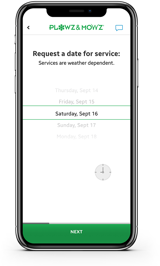WRITTEN BY admin
Maintaining a lush and healthy lawn throughout the year can vary greatly depending on your climate zone. From the freezing winters in Minneapolis to the hot, dry summers in Phoenix, each area has its unique challenges and requirements. This guide offers a month-by-month breakdown of lawn care practices tailored to different U.S. climate zones, ensuring your lawn stays green and vibrant no matter the season.
Northern Climate Zone (Minneapolis, Chicago, Boston, etc.)
Spring
- March-April: Begin by raking to remove thatch and debris. Start mowing as the grass begins growing.
- May: Apply a slow-release nitrogen fertilizer and pre-emergent herbicide to prevent weed growth. Overseed any sparse areas.
Summer
- June-August: Mow regularly, keeping grass taller to reduce stress and shade the soil. Water deeply but infrequently to encourage deep root growth, ideally early in the morning.
Fall
- September-October: Aerate your lawn to improve nutrient absorption and reduce soil compaction. Apply a winterizing fertilizer to prepare grass for cold months.
- November: Do a final mow before the first freeze, and remove leaves to prevent mold and disease.
Winter
- December-February: Minimize traffic on the snow-covered lawn to prevent damage to the turf beneath.
Transitional Climate Zone (St. Louis, Washington DC, Raleigh, etc.)
Spring
- March-April: Rake and start mowing. Apply pre-emergent weed control and a balanced fertilizer.
- May: Begin regular watering if rain is insufficient. Overseed as necessary.
Summer
- June-August: Mow grass at a height of about 3 inches to protect against heat. Water in the early morning, and apply another round of fertilizer in early June.
Fall
- September-October: Aerate and apply fall lawn fertilizer. Continue to water as needed. Prepare for winter by gradually lowering the mowing height.
Winter
- December-February: Limit lawn traffic when the grass is dormant. Brush off heavy snow from branches and grass to prevent breakage.
Southern Climate Zone (Orlando, Dallas, Phoenix, etc.)
Spring
- March-April: Start mowing at a lower height as grass resumes normal growth. Apply a weed preventer and fertilizer appropriate for your grass type.
- May: Increase mowing frequency with rising temperatures. Water deeply once or twice a week.
Summer
- June-August: Mow early in the morning to prevent heat stress. Adjust your watering schedule according to temperature and rainfall.
Fall
- September-October: Reduce mowing frequency as growth slows. Apply a pre-winter fertilizer if necessary to strengthen roots.
Winter
- December-February: In milder climates, mow as needed. Water occasionally during dry spells.
Proper lawn care is essential for a healthy, resilient lawn and varies significantly across different climate zones. By following this seasonal guide, homeowners can ensure that their lawn receives the attention it needs when it matters most, leading to a robust, green lawn that enhances their home’s curb appeal year-round. Whether you’re in the snowy north, the temperate transition zone, or the warm south, adapting your lawn care practices to fit the local climate is key to success.

























